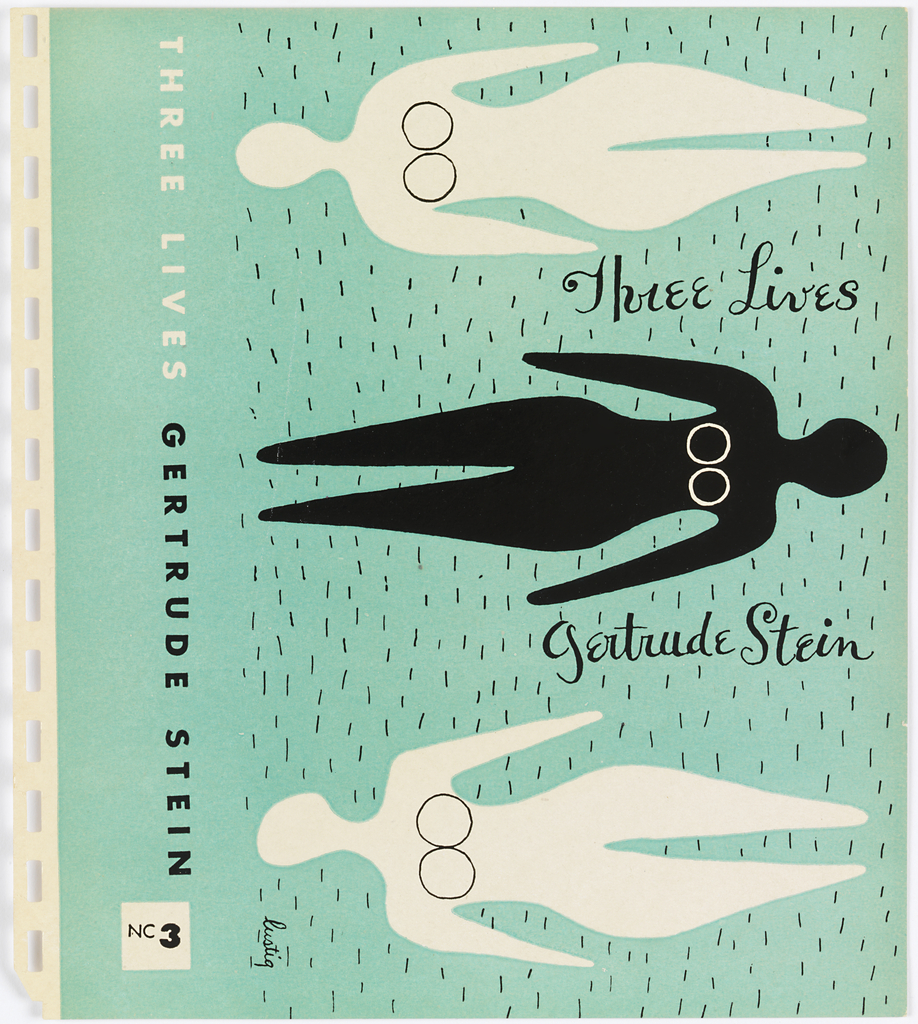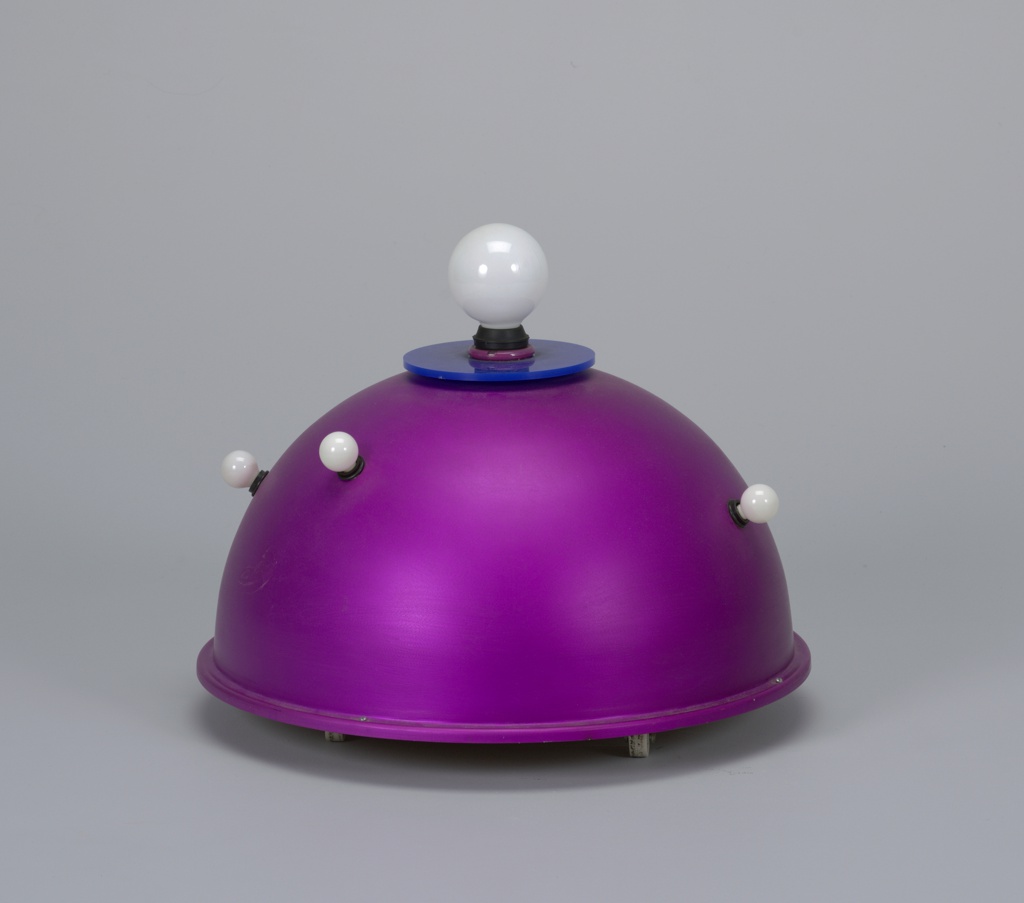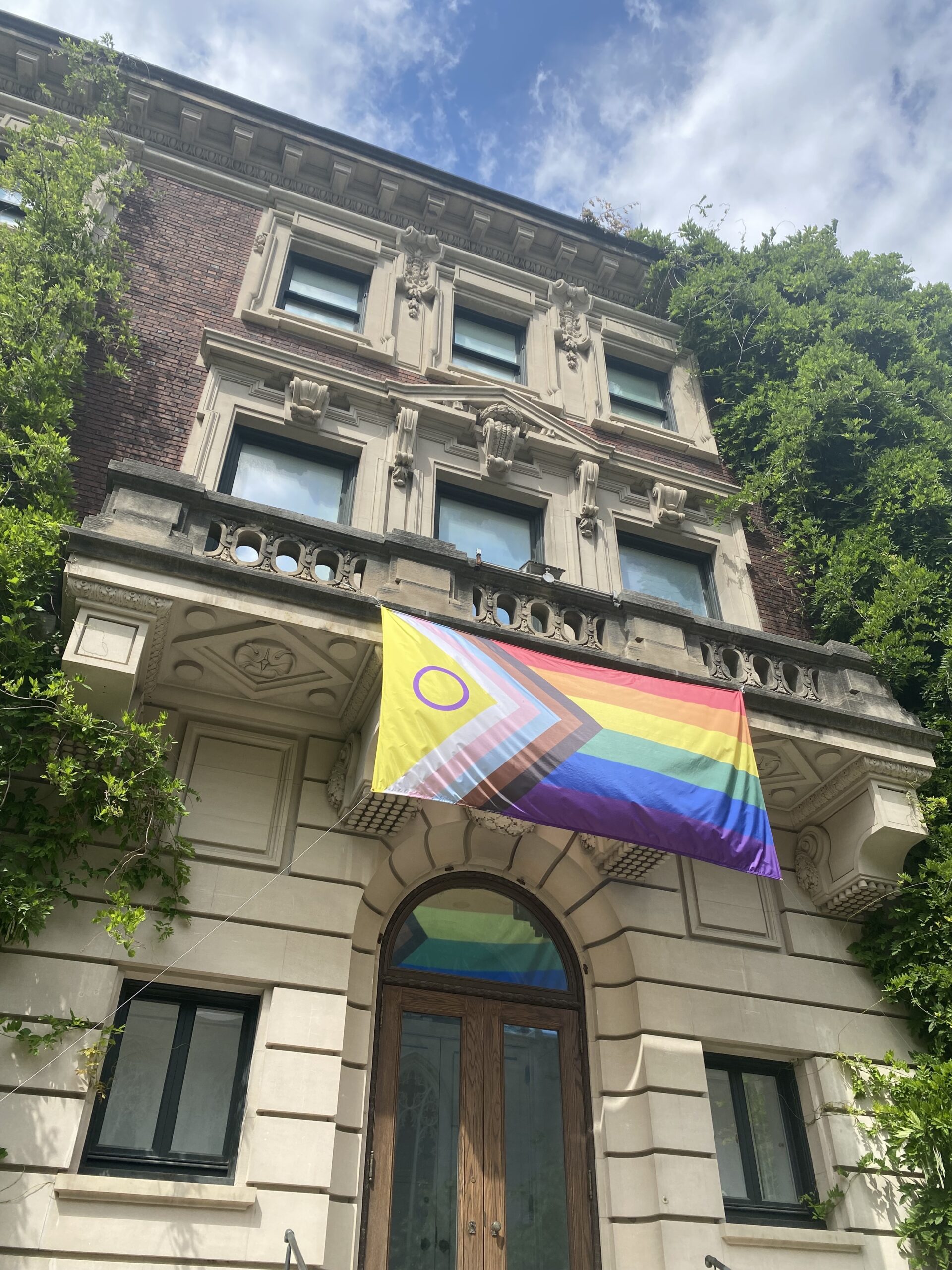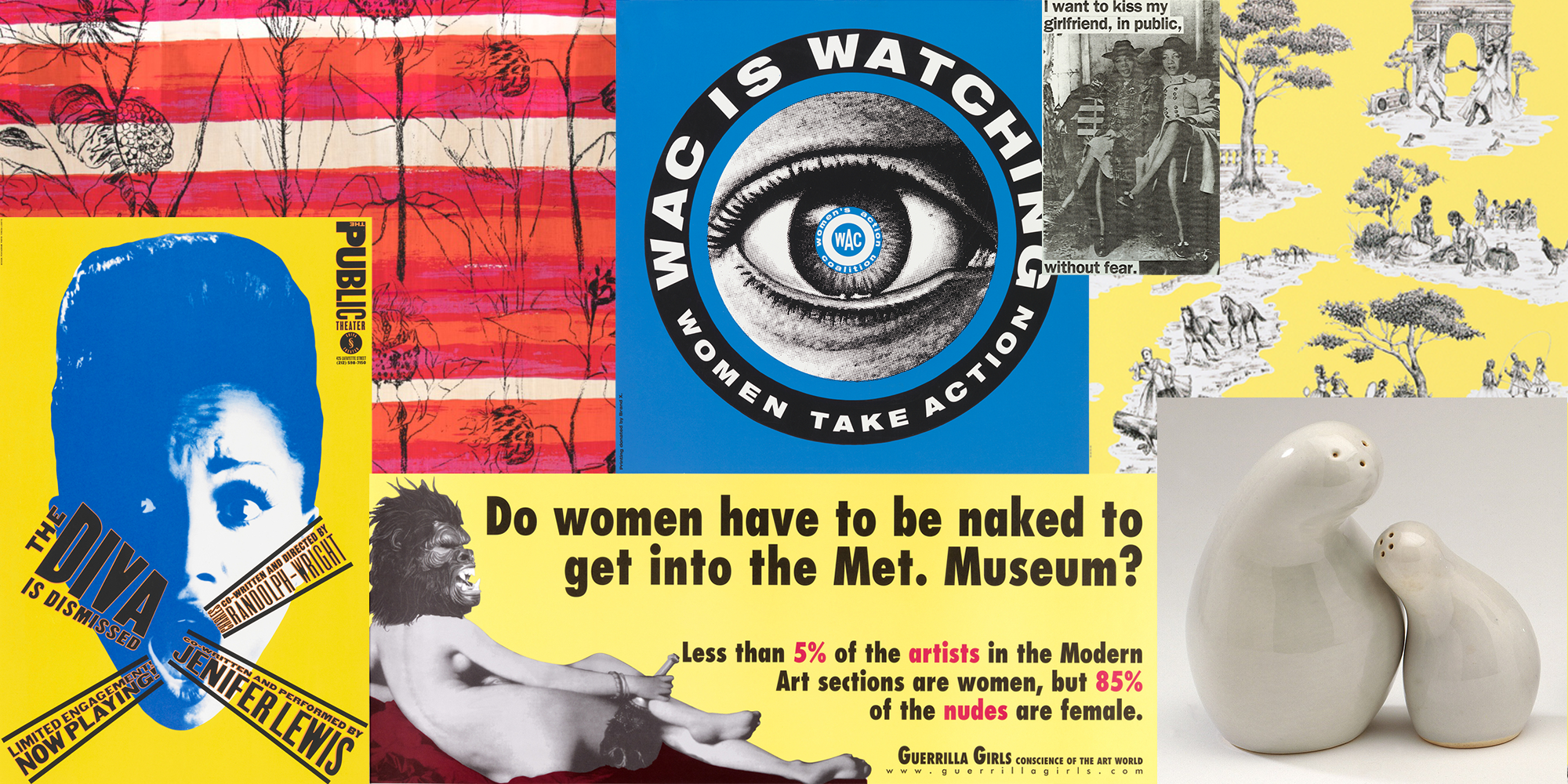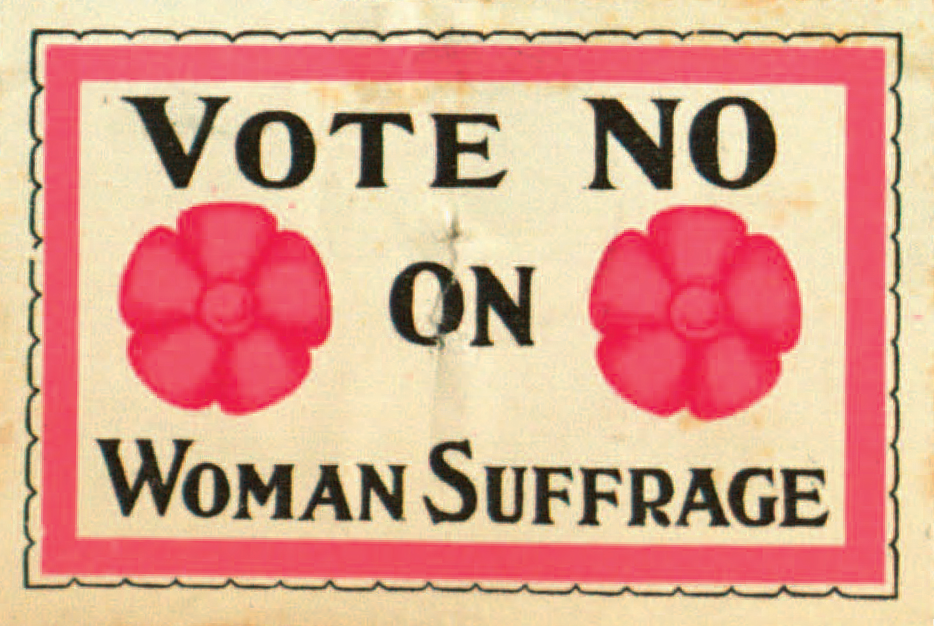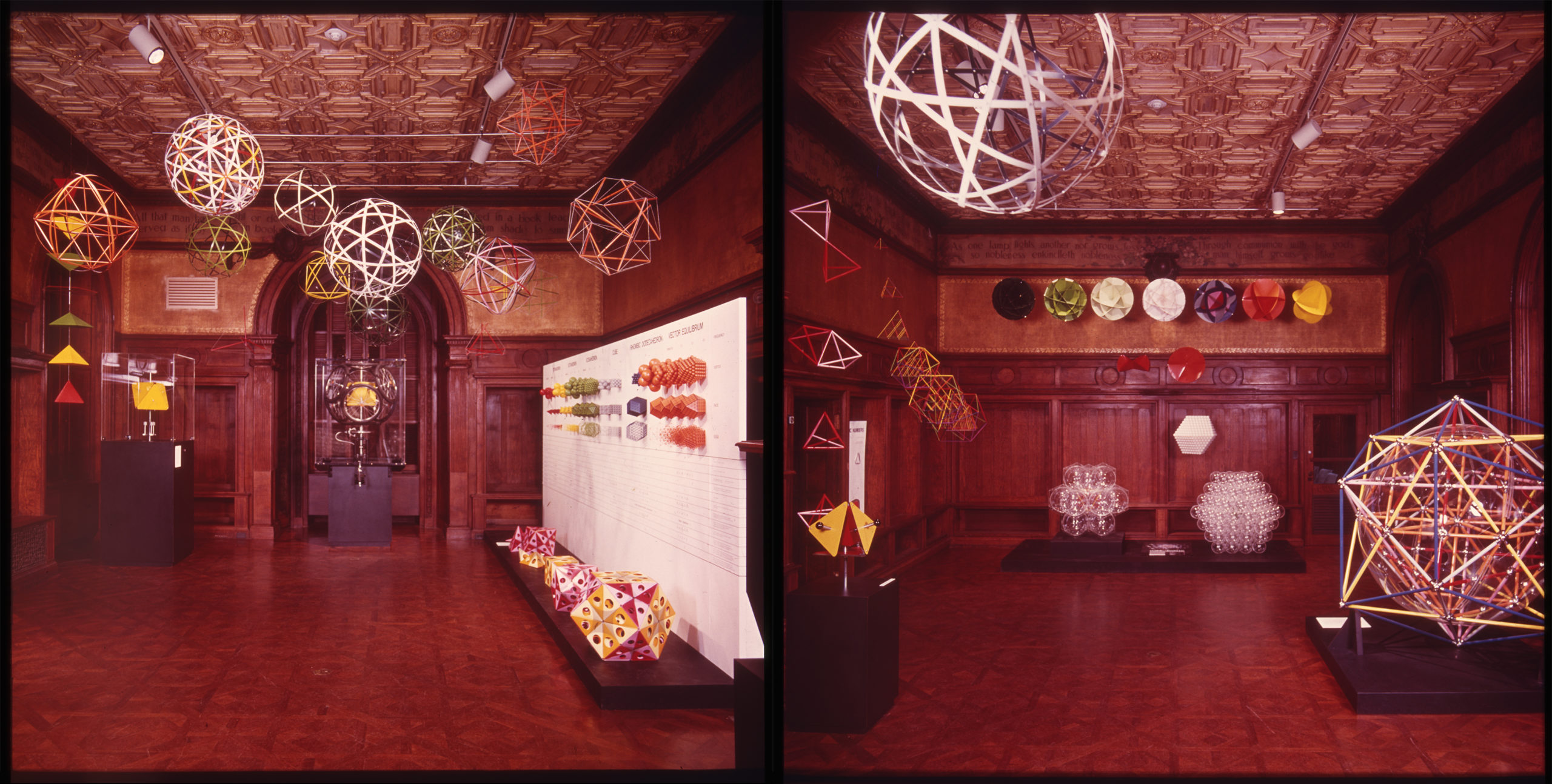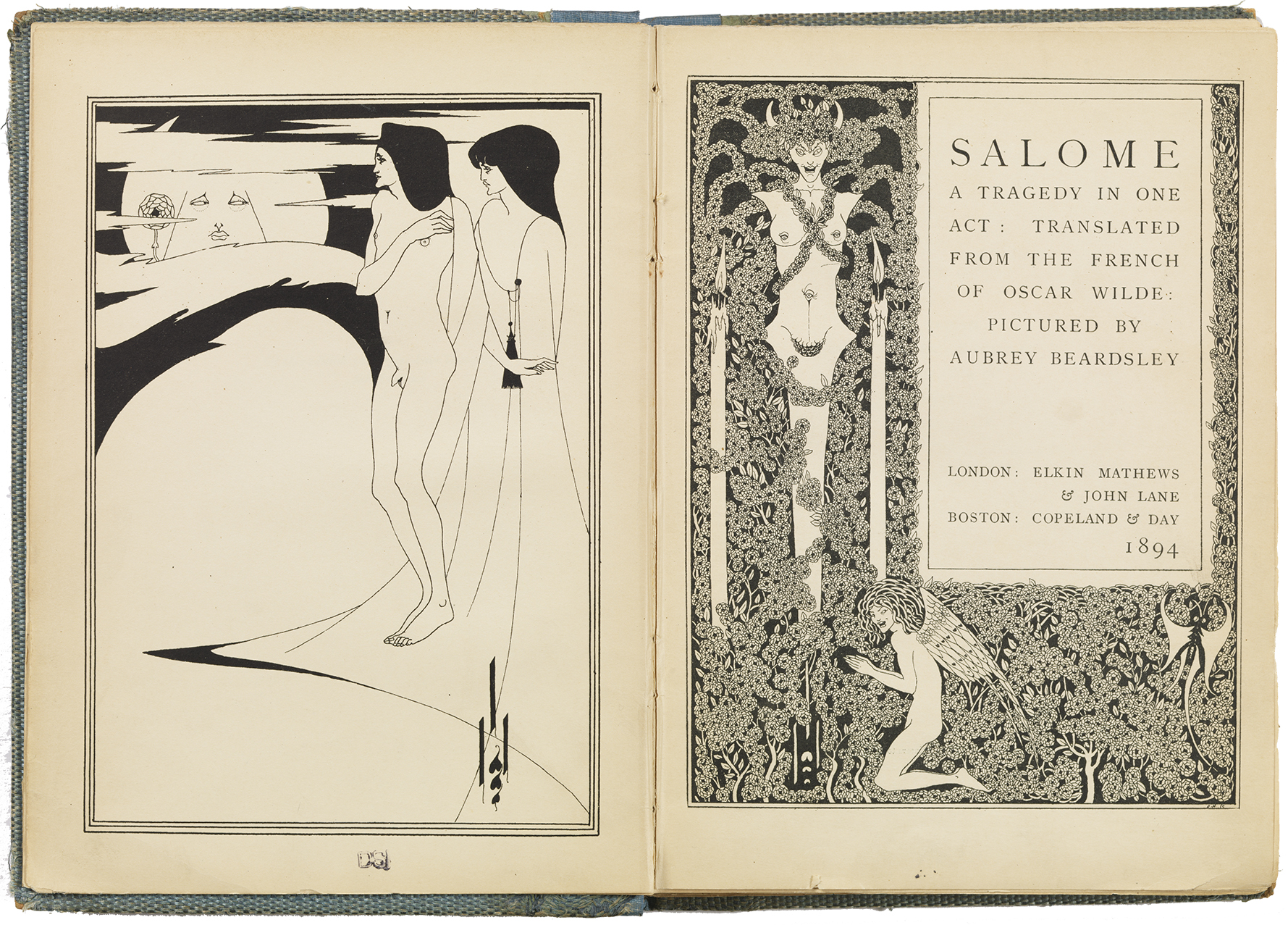The worlds of design and writing collide in this exploration of published work by LGBTQIA+ individuals.
Get to know wallcoverings (and a shopping bag) by LGBTQIA+ designers and artists in pop art and 1960s aesthetics.
In observance of Pride month, Cooper Hewitt’s curatorial departments have selected a group of objects with LGBTQ+ stories to feature on the museum’s collection site. These objects are loosely connected by the theme of queer modernisms and are by LGBTQ+ designers.
In 2023, Cooper Hewitt hung the Intersex-Inclusive Progress Pride flag on its south-facing facade. The installation celebrates LGBTQ+ Pride Month and demonstrates the evolution of inclusivity in the design of Pride flags.
For Women's History Month, view more than 100 years of women's contributions to wallpaper design.
Women's right to vote was a widely debated issue in the United States in the late 19th and early 20th century. Prominent women were on both sides of the debate, which pushed against traditional views of gender and class.
On October 7, 1976, Cooper Hewitt opened, joining the Smithsonian and becoming the nation’s design museum. Learn how that came to be.
When Salome requests a severed head on a platter, be careful what you wish for. Or write. Or draw. In 1894, Oscar Wilde and Aubrey Beardsley—both considered enfants terribles of Victorian England for their provocative work and lifestyles—produced a printed edition of Wilde’s play Salome. Wilde’s psychological centralization on the character of Salome and Beardsley’s...
